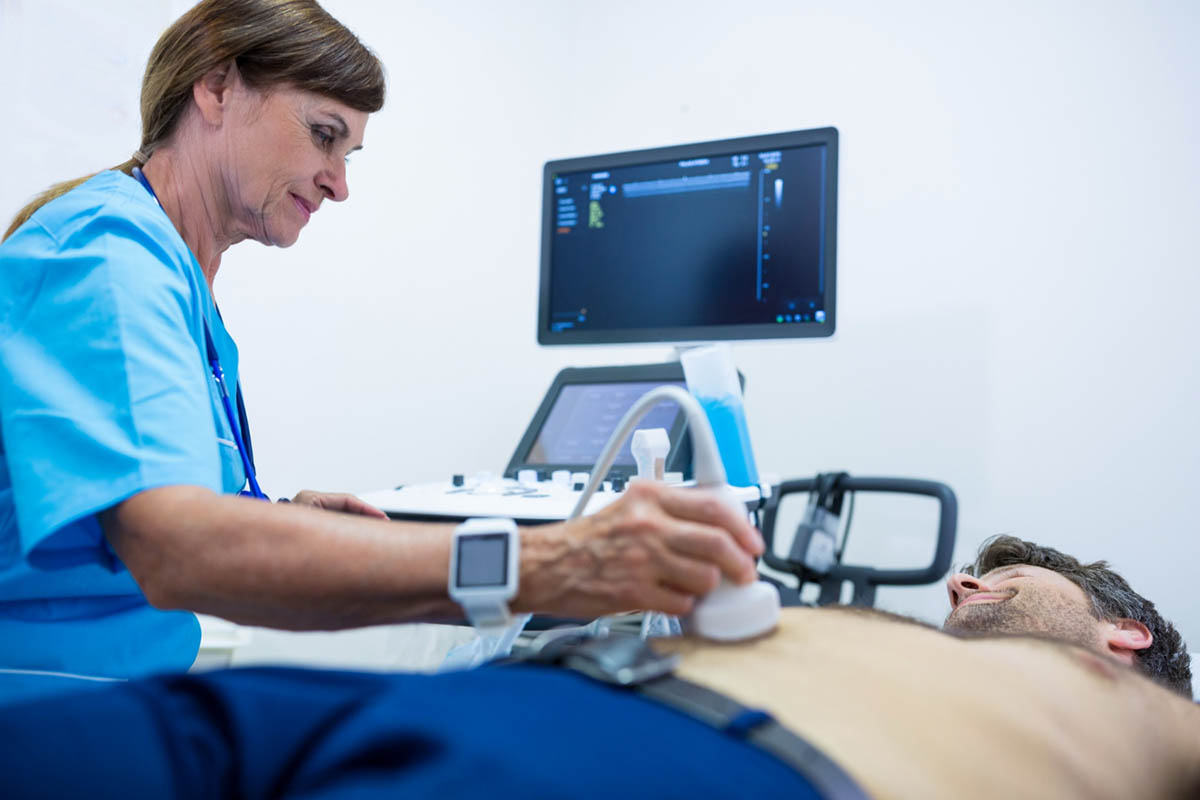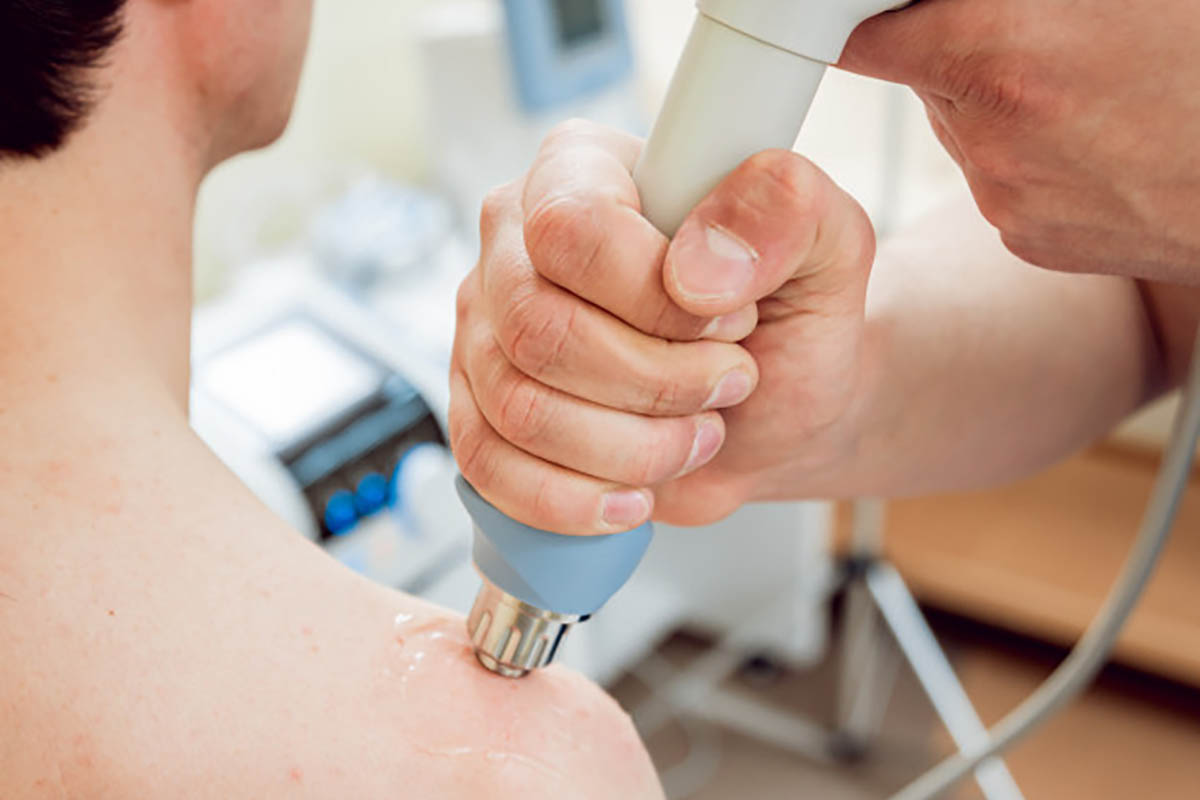Extracorporeal Shockwave Therapy (ESWT) is an innovative, non-invasive form of treatment that has gained popularity recently, particularly in physical therapy and sports medicine. It involves applying high-energy pressure waves to injured tissues to promote healing and pain relief. Initially used for breaking down kidney stones (lithotripsy), ESWT has since been adapted for various musculoskeletal and neurological conditions.
There are two main types of shockwave therapy: radial shockwave therapy and focused shockwaves. Radial pressure waves disperse over a broader area, making them suitable for treating superficial soft tissue conditions, whereas focused shockwaves target deeper tissues and are often used for more precise, localized treatment. Understanding the distinction between these two forms is crucial for patients and practitioners alike, as the type of shockwave therapy used can significantly affect the outcomes.
The History of Extracorporeal Shockwave Therapy
ESWT was first introduced in the early 1980s to treat kidney stones (extracorporeal shock wave lithotripsy). The success of this technology in breaking down stones without the need for invasive procedures led researchers to explore its potential in other medical fields. By the 1990s, ESWT had begun to be used in orthopedics and sports medicine specialists to treat chronic pain conditions like plantar fasciitis and tendinopathies. Over the decades, ESWT has been refined and expanded to treat various conditions, from chronic musculoskeletal pain to emerging applications in neurological rehabilitation.
How Does Extracorporeal Shockwave Therapy Work?
An extracorporeal shock wave therapy machine delivers high-energy sound waves to injured tissues, stimulating blood circulation and promoting healing. This non-invasive approach also helps with Pain Reduction by disrupting the transmission of pain signals and triggering the body’s natural healing process.
Mechanism of Action
The science behind ESWT lies in its mechanisms of action, including delivering high-energy acoustic waves to targeted tissues. These mechanical waves penetrate the skin and travel through the body, creating microtrauma in the affected area. This microtrauma is not harmful; it stimulates the body’s natural healing processes, promoting blood flow, cell regeneration, and the release of growth factors. This makes ESWT particularly effective in treating chronic inflammation or poor healing conditions, such as tendinitis or delayed bone healing.
Physiology

At the cellular level, ESWT stimulates the body’s repair mechanisms by inducing neovascularization and forming new blood vessels, improving bone density and other physiological mechanisms. This enhanced blood flow helps deliver essential nutrients and oxygen to connective tissues, accelerating tissue healing. The therapy also promotes the production of collagen, which is critical for repairing injured tendons and ligaments.
Extracorporeal shock wave treatment and therapeutic ultrasound share similarities in their aim to enhance tissue healing. However, ESWT’s high-energy waves penetrate more profoundly and have a more substantial mechanical impact on tissues than therapeutic ultrasound, which typically uses lower-frequency radial waves. This difference in energy levels accounts for the more pronounced effects of ESWT in treating chronic conditions.
Principles of ESWT
The therapeutic effects of shock waves in extracorporeal shock wave therapy (ESWT) are fundamentally linked to the unique physical properties of shockwaves. These shockwaves are mechanical pulses that feature a swift increase in pressure, followed by a negative pressure phase. This phenomenon creates cavitation, resulting in tiny bubbles within the tissues that collapse, generating secondary forces that further promote healing. The biological outcomes of these accurate shockwaves involve enhanced cell permeability, stimulated angiogenesis (the creation of new blood vessels), and activation of cellular repair mechanisms. Data supporting the effectiveness of ESWT is compelling; 88.5% (23 out of 26) of randomized controlled trials (RCTs) evaluating radial extracorporeal shockwave therapy (rESWT) and 81.5% (66 out of 81) of RCTs on focused ESWT (fESWT) listed in the PEDro database demonstrated significant positive results—indicating that both rESWT and fESWT proved statistically superior to either placebo or alternative treatment methods.
Treatment Indications for Shockwave Therapy
Extracorporeal shock wave therapy is indicated for various conditions, including chronic tendinopathies, patellar tendinopathy, plantar fasciitis, and shoulder pain due to calcific lesions. It is also employed in treating delayed bone healing and certain forms of chronic pain, such as trochanteric pain syndrome, providing a non-invasive alternative to surgery.
Musculoskeletal Conditions
Extracorporeal shock wave therapy (ESWT) has shown promising results in treating various musculoskeletal disorders. One of the most common is plantar fasciitis, a condition associated with chronic foot pain due to plantar fascia inflammation, often treated with radial shock waves. ESWT has proven especially beneficial for patients without relief through conventional treatments, including rest, orthotic devices, or corticosteroid injections.
Additionally, it is effective for tennis elbow (lateral epicondylitis), a painful condition resulting from tendon overuse, with studies indicating significant symptom relief in a large percentage of pain in patients following treatment, especially for those involved in physical activity such as sports injuries. Wang et al. compared the results of shockwave therapy in 57 patients (58 elbows) with lateral epicondylitis of the elbow with a control group of 6 patients (6 elbows) with a follow-up of 12 to 26 months. The overall results of the treatment group were complaints-free in 27 (61.4)%, significantly better in 13 (29.5)%, slightly better in 3 (6.8%), and unchanged in 1 (2.3%). Another condition effectively treated by ESWT is the frozen shoulder (adhesive capsulitis), where calcium deposits in the shoulder tendons cause pain and limit mobility; the therapy aids in breaking down these deposits alleviate discomfort and enhances functional ability.
Neurological Conditions
Emerging research suggests ESWT may also help treat neurological disorders and rehabilitation. Studies are exploring how extracorporeal shock wave therapy can be used to treat conditions such as spasticity and peripheral nerve injuries, with clinical studies showing promising results. A systematic review analyzing ten studies involving 433 patients (501 wrists) found that shock waves would improve pain, other symptoms, and function in patients with carpal tunnel syndrome, highlighting the effectiveness of shock wave therapy. Although the research is still in its early stages, the potential for ESWT to modulate nerve function and promote neuroplasticity (the brain’s ability to reorganize itself) is promising.
How ESWT Differs from Therapeutic Ultrasound
While ESWT and therapeutic ultrasound promote healing and pain reduction, they operate on different principles and are used for other indications. As mentioned, ESWT delivers high-energy waves that create tissue microtrauma, stimulating a more aggressive healing response in damaged tissue. In contrast, therapeutic ultrasound uses lower-energy sound waves primarily to increase tissue temperature and improve blood flow, making it more suitable for treating superficial soft tissue injuries.
Similarities Between Therapeutic Ultrasound and ESWT
Despite their differences, both therapies share similarities in enhancing tissue healing and faster recovery. Both modalities increase blood flow to the affected area, promote collagen production, and decrease pain. They are also both non-invasive treatments, making them appealing options for patients looking to avoid surgery.
Adverse Events and Contraindications of ESWT in Physiotherapy

While ESWT is generally safe, practitioners and patients should be aware of potential side effects and risk of complications. Common adverse effects include localized pain during or after the treatment, bruising, nerve irritation, and swelling. These side effects are usually mild and resolve within a few days.
However, ESWT is only suitable for some. Specific contraindications include pregnancy, vascular diseases, blood clotting disorders, cancerous tissue, and tumors.
- Pregnancy: The effects of ESWT on a developing fetus are not well understood, so it is generally avoided in pregnant women.
- Blood Clotting Disorders: Patients with conditions like hemophilia or those on blood-thinning medications may be at increased risk of bleeding or bruising.
- Tumors: Shockwave therapy is contraindicated in areas where there are malignant tumors, as the treatment could stimulate tumor growth.
Conclusion
Extracorporeal Shockwave Therapy (ESWT) is a powerful tool in the physiotherapist’s arsenal, offering effective treatment for various musculoskeletal and potentially neurological conditions. If you’re searching for extracorporeal shock wave therapy near me, Progressive Mobility Physio & Performance has found that its ability to stimulate the body’s natural healing processes at a cellular level sets it apart from other noninvasive treatment options. While there are some side effects and contraindications to consider, the overall benefits of ESWT, supported by extensive research, make it a valuable form of treatment for patients seeking relief from chronic pain and injury.
FAQs
How long does a typical shock wave therapy session last?
An ESWT session generally lasts 15 to 30 minutes, depending on the specific condition. The treatment time can be adjusted to ensure optimal results for each patient.
How many shock wave therapy sessions are usually needed to see results?
Typically, patients need 3 to 5 sessions to observe considerable improvements. These sessions are usually scheduled one to two weeks apart for optimal effectiveness.
Is shock wave therapy painful?
Patients may feel slight discomfort during the procedure; however, this sensation generally diminishes rapidly post-treatment. Overall, any pain is typically mild and short-lived.



